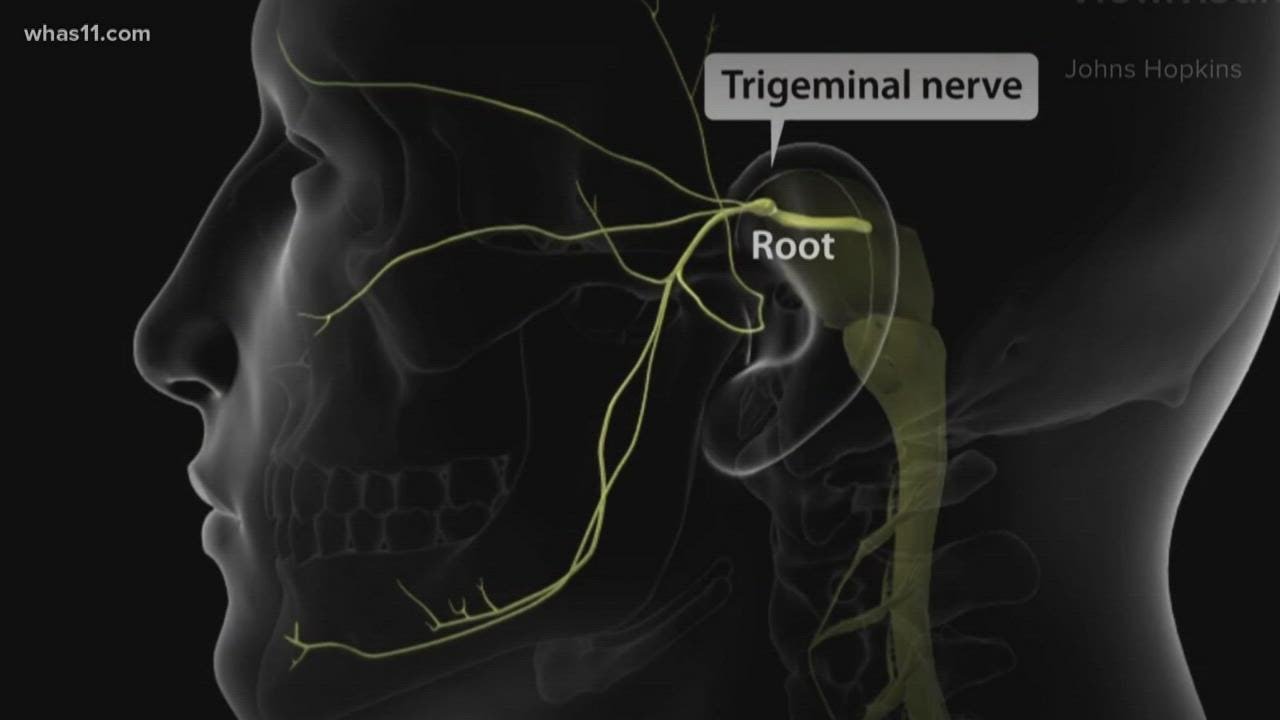Trigeminal Neuralgia - Vast Pain From This Suicide Disease
Trigeminal neuralgia has a profound impact on the quality of life of those affected. The chronic nature of the condition presents additional challenges for individuals suffering from it. The intensity of the pain can also lead to depression - even to suicidal thoughts.
Author:Katharine TateReviewer:Karan EmeryJun 01, 202371K Shares946.7K Views

One of the most excruciating types of pain known to humankind is caused by a neurological condition known as trigeminal neuralgia.
The relentlessness of the pain, coupled with its intermittent nature, often results in a delayed diagnosis, as symptoms are mistaken for dental issues or other facial conditions.
Finding an effective treatment plan can be a complex and lengthy process, as not all individuals respond to the same interventions.
Consequently, the journey toward relief can be frustrating and disheartening for those living with trigeminal neuralgia.

Trigeminal Neuralgia, local doctors may have found the cure
What Is Trigeminal Neuralgia?
The trigeminal nerve, also known as cranial nerve V, is the fifth of the twelve cranial nerves in humans.
It is a mixed nerve, meaning it contains both sensory and motor fibers.
The trigeminal nerve is responsible for:
- transmitting sensations from the face to the brain
- controlling the muscles involved in chewing
The trigeminal nerve has three main branches, each responsible for different regions of the face:
1. Ophthalmic nerve (V1)
This branch supplies sensory fibers to the upper face, including the:
- forehead
- scalp
- upper eyelid
- front part of the scalp
2. Maxillary nerve (V2)
The maxillary branch carries sensory information from the middle face, including the:
- lower eyelid
- upper lip
- cheek
- side of the nose
3. Mandibular nerve (V3)
The mandibular branch is the largest and supplies sensory fibers to the lower face, including the:
- lower lip
- chin
- jaw
- parts of the ear
Trigeminal neuralgia most commonly affects the maxillary and mandibular branches.
It is characterized by sudden, severe, and sharp facial pain that can be triggered by even mild stimulation of the face, such as:
- eating
- talking
- touching the affected area
Causes Of Trigeminal Neuralgia
The exact cause of trigeminal neuralgia is not fully understood.
Still, it is often associated with compression or irritation of the trigeminal nerve by a blood vessel or a benign tumor.
Here are some of the other probable causes and factors associated with it:
a. Multiple sclerosis (MS)
Trigeminal neuralgia can occur in individuals with multiple sclerosis, a chronic autoimmune disorder that affects the central nervous system.
In MS, the protective covering of nerve fibers (myelin) is damaged, which can disrupt the normal functioning of the trigeminal nerve.
b. Age-related changes
Trigeminal neuralgia is more commonly seen in individuals over the age of 50.
Age-related changes in blood vessels or the trigeminal nerve may play a role in its development.
c. Facial trauma
Previous facial injuries or trauma (e.g., fractures or surgeries) can sometimes lead to the development of trigeminal neuralgia.
d. Genetic factors
Although rare, there may be a genetic component to trigeminal neuralgia, as some cases have been reported to run in families.
e. Other medical conditions
Certain medical conditions can potentially cause trigeminal neuralgia, such as:
- tumors
- arteriovenous malformations or AVMs (the abnormal tangles of blood vessels)
- other structural abnormalities in the face or skull
f. Dental or sinus problems
In some cases, underlying dental or sinus issues (e.g., infections or dental procedures) can trigger or contribute to facial pain resembling trigeminal neuralgia.
Trigeminal Neuralgia Symptoms
The main symptom of trigeminal neuralgia is intense facial pain that can be triggered by various activities or even everyday movements.
The pain - typically lasts for a few seconds to a couple of minutes - is often described as:
- sudden
- severe
- stabbing
- like an electric shock
The pain is usually unilateral (on one side of the face only) commonly felt in the:
| lips | nose |
| gums | cheek |
| teeth | jaw |
The pain is less frequently felt in the forehead and eye area.
In a 2016 interviewwith MSNBC, the then-39-year-old Amanda Young shared what the pain was like. The Brooklyn-based fitness instructor said:
“„I am generally a very positive and happy person, but some days I can’t tolerate this. It feels like somebody is taking a screwdriver and sticking it in my face and then taking car battery charges and connecting them and trying to turn my face on.- Amanda Young
Here are the other common symptoms associated with trigeminal neuralgia:
a. Trigger points (note: vary from person to person)
Certain triggers can provoke or worsen the pain, such as:
- touching the face
- chewing
- speaking
- brushing teeth
- even exposure to cold air
b. Episodic attacks
Trigeminal neuralgia often occurs in episodes or attacks that can last from seconds to minutes.
These episodes may come and go sporadically, with periods of remission followed by periods of recurrent pain.
c. Sharp, shooting pain
It can be excruciating and debilitating, causing a person to avoid certain activities to prevent triggering the pain.
d. Pain on one side of the face
Trigeminal neuralgia usually affects only one side of the face, with the pain rarely crossing the midline.
e. Facial twitching or spasm
Some individuals may experience involuntary facial twitches or muscle spasms, usually in response to pain or triggers.
f. Pain-free intervals
In between episodes of intense pain, individuals may experience pain-free intervals. However, the fear of triggering an episode may cause anxiety or distress.

Trigeminal Neuralgia patients describe life with TN
Trigeminal Neuralgia Treatment
The treatment of trigeminal neuralgia aims to relieve pain and improve the quality of life for individuals affected by the condition.
Here are some of the commonly used treatment options:
1. Medications
Initially, to manage the pain, doctors usually prescribe anticonvulsant medications (medications used to treat and manage seizures or convulsions), such as:
- carbamazepine (Tegretol)
- oxcarbazepine (Trileptal)
- gabapentin (Neurontin)
These medications work by stabilizing the overactive nerve and reducing the transmission of pain signals.
2. Nerve block
This procedure involves injecting a local anesthetic (e.g., lidocaine) near the trigeminal nerve to temporarily block the pain signals.
Nerve blocks provide short-term relief and can be repeated as needed.
3. Botox injections
Botulinum toxin(Botox) injections have shown promise in relieving trigeminal neuralgia pain by blocking the release of certain pain signaling chemicals from nerve endings.
However, more research is needed to establish its effectiveness.
4. Stereotactic radiosurgery
This non-invasive procedure uses highly focused radiation beams to target and damage the trigeminal nerve root, reducing pain signals.
Gamma Knife radiosurgery is a common technique used for this purpose.
5. Microvascular decompression (MVD) surgery
MVD is a surgical option that involves moving blood vessels that are compressing the trigeminal nerve away from the nerve.
By relieving the pressure on the nerve, MVD can provide long-term pain relief.
6. Radiofrequency ablation
In this procedure, radiofrequency waves are used to heat and destroy a small part of the trigeminal nerve, interrupting the transmission of pain signals.
It can provide pain relief for several months to years.
7. Peripheral nerve stimulation
This involves implanting a device near the affected nerve that delivers mild electrical impulses, interrupting the pain signals and providing relief.
Trigeminal Neuralgia Other Names
Trigeminal neuralgia is also known by several other names, including:
a. Tic douloureux(“painful tic”)
This term is derived from these French words: tic(meaning “spasm”) and douloureux(meaning “painful”).
b. Prosopalgia
It combines two Greek words: prosopon(meaning “face”) and algos(meaning “pain”).
c. Fothergill’s disease
It’s named after the British physician John Fothergill (1712-1780). He first described the condition in 1773.
Trigeminal Neuralgia Suicidality Rate
Trigeminal neuralgia is also referred to as the Suicidal Disease.
According to Microsoft Start Health, two Indian doctors - Dr. Rajesh Mishra and Dr. Fahad Saifi - it is called as such because of the extreme pain it causes make the person think of suicidal thoughts.
Based on a 2018 Cosmopolitan article, the Trigeminal Neuralgia Association U.K. said it’s also a cause of depression (which can then lead to suicide).
People Also Ask
What Can Be Mistaken For Trigeminal Neuralgia?
Some of the conditions that can be confused with trigeminal neuralgia include:
a. migraines(severe headaches that can cause intense throbbing or pulsating pain, often on one side of the head)
b. dental problems(can cause facial pain; e.g., tooth decay, abscesses, or dental infections)
c. cluster headaches(cause severe, excruciating pain on one side of the head, usually around the eye)
d. temporomandibular joint (TMJ) disorders(affect the joints and muscles that control jaw movement)
e. sinus infections(can cause facial pain, particularly in the area around the eyes and cheeks)
f. glossopharyngeal neuralgia(a condition that causes sharp, shooting pain in the throat, ear, and back of the tongue
Is Neuralgia Caused By Stress?
Stress can potentially trigger or exacerbate certain medical conditions, including pain disorders. However, the exact cause of trigeminal neuralgia is not definitively known.
In addition, while stress may not be a direct cause of trigeminal neuralgia, it is believed that stress and certain triggers can contribute to the occurrence of pain episodes in individuals who already have the condition.
Stress can potentially aggravate the symptoms and make the pain more intense or frequent.
Which Celebrity Has Trigeminal Neuralgia?
Here are two celebrities - one a musician; the other, a Bollywood star - who have trigeminal neuralgia:
a. Travis Barker, 47
In June 2022, the drummer of the American rock band Blink-182 and husband of Kourtney Kardashian was admitted at the Cedars-Sinai Medical Center in Los Angeles for trigeminal neuralgia, reported Marca.
b. Salman Khan, 57
This award-winning Indian actor and producer first experienced the pain caused by trigeminal neuralgia in 2007, according to CBS News.
Final Thoughts
Despite the immense physical and emotional burden, it is crucial to shed light on trigeminal neuralgia to increase awareness and understanding of this condition.
By fostering empathy and knowledge, we can work towards providing better support systems, improved treatments, and a more compassionate society for individuals grappling with the daily challenges posed by it.
As life becomes extra more challenging for those with trigeminal neuralgia, let’s hope that doctors will find a breakthrough treatment soon.

Katharine Tate
Author

Karan Emery
Reviewer
Latest Articles
Popular Articles


